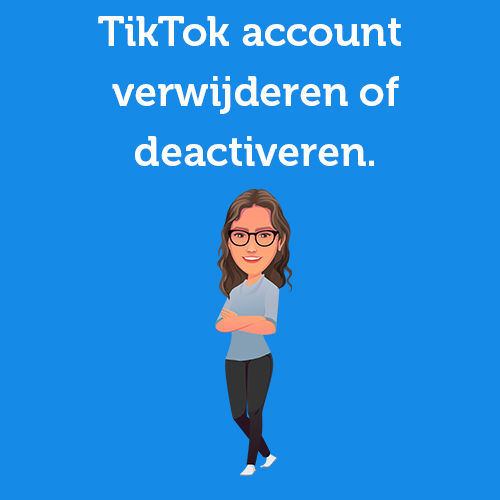Menu
Table of contents
The cold is now giving way to the first warm days of the year.
The buds on the trees are slowly waking up from their winter sleep, the flowers are starting to bloom and that means two things: we are all going to start redecorating our gardens and it is time to take a look at the social media market share in the Netherlands and Europe.
What are the proportions in early 2020? And are we cautiously already seeing effects of the corona crisis and home quarantine? Let's find out!
Netherlands
| Netherlands | December 2019 | March 2020 |
| 49,02% | 65,61% | |
| 29,98% | 15,50% | |
| 10,12% | 9,75% | |
| 6,37% | 6,32% | |
| Youtube | 2,53% | 1,76% |
As hard as Facebook plummeted at the end of last year, it is now managing to regain its market share. An increase of a whopping 16% percent. And that is impressive, especially when you consider that in February it was still at about 54%. So advertisers seem to be betting heavily on the main social media channel during these turbulent times.
Where one person's market share goes up, another's goes down. That's just the way it works. Pinterest seems to have become the biggest victim of Facebook's resurgence. All the while, it offers a lot of inspiration for your front yard. Noteworthy.
Twitter and Instagram are also declining slightly, but nothing worrisome. Their market shares remain virtually the same. Although we might have expected the news about COVID-19 to spread quickly through Twitter (no pun intended) and increase usage and thus advertising costs.
For now, by the way, we don't seem to spend all that extra time watching videos on Youtube. Not surprising either, since we no longer prefer ephemeral content now. No, we have plenty of time to binge-watch entire series on Netflix and Videoland.
So interesting developments. Let's also see if that only applies to the Dutch or if the social media market share is following a similar trend across Europe (and specifically Germany and Belgium).
Europe
| Europe | December 2019 | March 2020 |
| 72,05% | 75,85% | |
| 8,81%% | 5,96% | |
| 9,91% | 9,35% | |
| 6,76% | 6,55% | |
| Youtube | 1,87% | 1,48% |
At first glance, the Netherlands indeed seems to be a model for such a trend; Facebook is gaining, Pinterest is losing the most and Twitter and Instagram a little. Although the differences are less pronounced; Facebook does not gain relatively as much as in the Netherlands and Pinterest loses relatively less.
But is that true in all European countries?
No.
In fact, we see other things happening when we look at Germany and Belgium. So let's take another look at those as well.
Germany
| Germany | December 2019 | March 2020 |
| 57,45% | 58,55% | |
| 19,53% | 19,67% | |
| 9,08% | 9,63% | |
| 8,05% | 7,77% | |
| Youtube | 3,94% | 3,14% |
In Germany, Facebook also "just wins. Admittedly a little bit, but still. What is striking is the small increase in Pinterest's social media market share. Or rather: a decline, as we saw in Europe and the Netherlands.
And also Twitter is actually gaining a little bit instead of losing a little bit, but there too we can say that the share remains almost the same. Just like Instagram, by the way.
Youtube contributes a bit more relatively speaking. But that shouldn't really be a surprise anymore.
Belgium
| Belgium | December 2019 | March 2020 |
| 56,28% | 59,99% | |
| 27,71% | 19,56% | |
| 7,11% | 10,32% | |
| 5,49% | 7,35% | |
| Youtube | 2,20% | 1,90% |
In Belgium, Pinterest is again losing a large part of its social media market share (as in the Netherlands) and Facebook is also gaining slightly (not quite as in the Netherlands). Remarkably, it is Twitter and Instagram that are registering significant increases.
Would a total lockdown like they have in our southern neighbors lead to people indeed consuming their news via Twitter also traditional media like newspaper and TV be hit by the measures?
And do they share more photos from home out of boredom because they have less contact with the outside world?
Indeed, in France, where there is also a complete lockdown, we see a similar trend
Conclusion
We are all affected by the crisis caused by the coronavirus. And so it also has its impact on the social media market share in the Netherlands and Europe.
In fact, companies that were previously less active on social media are now also grabbing the channels just to stay in touch with their target audience and not be forgotten. And don't blame them...
Facebook seems to benefit the most by far. Not surprising, since many of those companies do have a following on the platform but not (or less) on other channels.
Either way, the world is upside down. Its exact impact on social media market share ratios remains to be seen, but we may already see the first effects appearing here.We'll keep an eye on it again for you and get back to you with an update at the end of Q2 in 2020!
Source: gs.statcounter.com











Written by: Daniel Kuipers
Daniel is the founder of Online Marketing Agency. He constantly scours the Internet for the latest gadgets and tactics and blogs about them in understandable language. Well, sometimes.